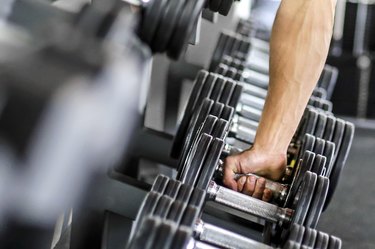
If you are looking to lose weight as quick as possible, you must note down these recipes of the most delicious protein shakes for weight loss around town.
But wait, aren’t protein shakes only for body builders? Nope, that myth was long busted. Protein is a vital nutrient and key building block of life.
Eating adequate protein isn’t just important for muscle growth – it’s also important for weight loss.
Drinking protein shakes for weight loss 1 – 2 times daily is a well-hidden secret for quicker weight loss. Not only are protein shakes low calorie foods, they are also a great way to replace meals – especially if you are in a hurry!
But here’s the real beauty of protein shakes – they keep you fuller for longer, stave off cravings, put off hunger and prevent binge eating!
So now that you agree that protein shakes are crucial tools for burning fat, let’s have a look at some of the most delicious protein shakes for weight loss that will help you reach your goal weight in no time!
1. Banana Protein Shake

Recipe via: asweetpeachef.com
You’ll swoon for the texture of this protein shake – so thick, rich and velvety! It’s one of the best homemade protein shake recipes out there – you won’t want to miss this one!
What you need1 cup plain unsweetened almond milk
1/2 cup plain full fat Greek yogurt
1 scoop vanilla protein powder
1 frozen banana
1/8 tsp ground cinnamon
Ice as needed
High speed blender like Vitamix or Nutribullet
Glass jar and glass straw
Directions
Add the unsweetened almond milk, full fat plain greek yogurt, vanilla protein powder, frozen banana, and ground cinnamon into a blender.
Blend until smooth. To make the shake more liquid, you can add more almond milk and blend again.
2. Green Protein Powder Breakfast Smoothie

Recipe via: ilovevegan.com
What better way to start the day than with a green protein power smoothie? And the best part about it? It’s completely vegan! Made of banana, mango and spinach, this green smoothie is nutrient-dense and yummy in my tummy! It contains 2 servings of fruits and vegetables, and is a great way to show your body some extra love.
What you need1 cup unsweetened almond milk
1 ripe frozen banana
½ cup frozen chopped mango
1-2 large handfuls of baby spinach
¼ cup pumpkin seeds
2 tbsp hemp hearts
½ scoop vanilla protein powder + ¼ cup water
High speed blender like Vitamix or Nutribullet
Glass jar and glass straw
Directions
Add the almond milk and blend until smooth.
3. Coffee Lovers Protein Shake

Recipe via: loveandzest.com
In Kristina’s own words, “This high protein and low sugar protein shake is a coffee lover’s dream.” Wow! I need me a cup of that! By the way, this productivity-boosting protein shake for weight loss is not just a great morning drink, but it’s also a perfect afternoon pick me up!
What you need½ ripe banana
1 scoop vanilla protein powder
½ cup unsweetened vanilla almond milk
½ cup cold or room temperature brewed coffee
1 ½ cups cubed ice
sprinkle of cacao nibs, for topping
1–3 drops stevia extract
High speed blender like Vitamix or Nutribullet
Glass smoothie jar and glass straw
Directions
Slowly add ice to blender and process until creamy.
Top with cacao nibs.
4. 5-Minute Protein Shake

Recipe via: thekitchn.com
If you are short of time, these nifty 5 minute protein shakes are the perfect option for you. You don’t even need protein powder for these recipes! You’ll find amazing variations for easy protein shakes including: Banana Bread Protein Shake, Mixed Berry + Chia Protein Shake, The Green Machine Protein Shake, Tropical Protein Shake and more.
Banana Bread Protein Shake
What you need3/4 cup almond milk
2 tbsp almond butter
1/4 cup raw cashews *soaked overnight
1 frozen banana
2 tbsp rolled oats
1 tbsp flaxseed
1 pitted date
1/4 tsp ground cinnamon
1 scoop vanilla protein powder
High speed blender like Vitamix or Nutribullet
Smoothie jar and glass straw
Directions
Serve immediately.
Mixed Berry + Chia Shake
What you need3/4 cup coconut water
1/3 cup Greek yogurt
1/2 cup frozen raspberries
1/2 medium raw beet (peeled and diced)
1 tablespoon agave
1 tablespoon hemp hearts
1 scoop vanilla protein powder
High speed blender like Vitamix or Nutribullet
Glass smoothie jar and glass straw
DirectionsCombine all ingredients in a blender and blend till smooth.
Top with an extra sprinkle of hemp hearts for serving.
The Green Machine Protein Shake
What you need3/4 cup coconut milk
1/3 cup Greek yogurt
1/2 heaping cup of spinach
1/2 avocado
1 tablespoon almond butter
1 tablespoon hemp hearts
1 tablespoon agave
1 scoop vanilla protein powder
High speed blender like Vitamix or Nutribullet
Glass smoothie jar and glass straw
Directions
Top with an extra sprinkle of hemp hearts for serving.
Tropical Protein Shake
What you need3/4 almond milk
1/3 cup silken tofu
1/2 cup frozen mixed berries
1 tablespoon chia seeds
1 tablespoon agave
1 scoop vanilla protein powder
High speed blender like Vitamix or Nutribullet
Glass smoothie jar and glass straw
DirectionsBlend everything up until smooth.
Top with an extra sprinkle of chia seeds before serving.
5. Strawberry Banana Protein Smoothie

Recipe via: diabetestrong.com
A taste test shows that this particular protein shake for weight loss is cool, refreshing and fruity! It’s the perfect way to cool down after a workout or day in the sun! Moreover, it contains a nice 25 grams of protein per serving!
What you need4 oz strawberries
1 oz banana
1 scoop vanilla protein powder
1 teaspoon flaxseed
Water
High speed blender like Vitamix or Nutribullet
Glass smoothie jar and glass straw
Directions
Add water. Start out with just a little water and then slowly add as much as you like to get the right consistency.
Serve over ice or use frozen berries to give the smoothie a thicker consistency.
6. Chocolate Peanut Butter Protein Shake

Recipe via: eatingwell.com
How would this list be complete without a chocolate OR peanut butter protein shake? Well this chocolaty protein shake is so thick and satisfying that it will keep you full for hours. Thanks to the naturally occurring protein in the soymilk, peanut butter and Greek yogurt, you don’t even have to use a store-bought protein powder!
What you need1 cup unsweetened vanilla soy milk
¾ cup sliced frozen banana
½ cup plain Greek yogurt
1 tbsp cocoa powder
1 tbsp peanut butter
1 scoop vanilla protein powder
High speed blender like Vitamix or Nutribullet
Glass smoothie jar and glass straw
Directions
Blend until smooth.
7. Cinnamon Protein Shake

Recipe via: jamieoliver.com
Embrace the added effect of cinnamon’s fat-burning powers to enhance this yummy protein shake for weight loss. Cinnamon is my favorite spice because it speeds up metabolism, reduces insulin production and helps in weight loss. In this recipe, protein powder is completely optional!
What you need1 ripe banana
1 cup low-fat natural yogurt or soya yogurt
½ cup non-dairy milk
1 tbsp peanut butter
1 tbsp chia seeds
½ tsp ground cinnamon
1 scoop vanilla protein powder
High speed blender like Vitamix or Nutribullet
Glass smoothie jar and glass straw
Directions
Enjoy immediately.
8. Blueberry Banana Protein Shake

Recipe via: hurrythefoodup.com
Blueberries in this shake give you an powerful antioxidant kick to keep you youthful and wrinkle-free! You can amp up the 20 grams of naturally occurring protein in this recipe to 45 grams by adding in additional protein powder. All you’ll need to do is toss all the ingredients into a blender and BAM! Your protein shake for weight loss is ready within minutes.
What you need1 cup frozen blueberries
2 ripe banana
1 cup water
1 tsp vanilla extract
4 oz low fat cottage cheese
2 tbsp chia seeds
1 tsp lemon zest
1 scoop vanilla protein powder
High speed blender like Vitamix or Nutribullet
Glass smoothie jar and glass straw
Directions
Blend up.
Enjoy!
9. Freezer Prep Green Smoothie Protein Shake

Recipe via: ohsweetbasil.com
Freezer smoothies? Oh yeah, baby! These are my favorite because I can plan out and bulk-freeze your smoothie ingredients so I’ll have peace of mind for a whole week. Learn how to properly freeze your ingredients to make a creamy and tasty protein shake for weight loss every single day.
What you need1 handful of greens
1 ½ handfuls of frozen fruit
1 tablespoon chia seeds
1 scoop protein powder
1-2 tablespoons peanut butter powder
High speed blender like Vitamix or Nutribullet
Glass smoothie jar and glass straw
Directions
Pour into a glass and enjoy!
10. Pina Colada Protein Shake

Recipe by: healthy-delicious.com
Get transported to the tropics with a grab-and-go pina colada protein shake. Very different from the usual proteins shakes, this recipe will keep things colorful and fun. It uses pineapple chunks and coconut extract – a tantalizing fat-burner to help you get slim and trim in a whim!
What you need1 cup frozen pineapple chunks
½ frozen banana optional
6 ounces unsweetened coconut milk
½ teaspoon coconut extract
1 scoop vanilla protein powder
High speed blender like Vitamix or Nutribullet
Glass smoothie jar and glass straw
Directions
Cover and blend on high until smooth and frosty, 10-15 seconds.
Pour into a glass and serve immediately with a glass straw.
Which of these delicious protein shakes for weight loss are you going to try today?

Welcome! Join our sanctuary to heal and transform your health, balance your hormones and revitalize your life! Remember, your ailment does NOT define you. You can heal through food, one bite at a time.
DISCLAIMER
The content on the blog is for educational and informational purposes only, and is not intended as medical advice. Please consult your doctor before acting on any information presented on this website.




























